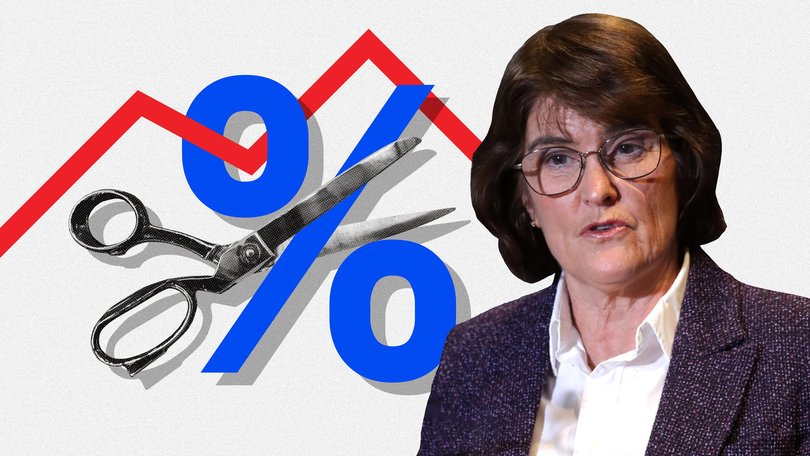Michele Bullock: RBA issues grim warning on living standards and productivity

The Reserve Bank has fired a warning shot about Australia’s economic future by downgrading forecasts for productivity ahead of Treasurer Jim Chalmers’ economic reform summit next week.
It means the RBA expects living standards to improve more slowly than previously hoped, and would delay in the country’s recovery from the post-pandemic cost-of-living crisis.
The shift comes after the economy consistently under-performed estimates. Productivity — which measures whether Australia’s economy can make more from less — has gone significantly backwards in the past two years.
Sign up to The Nightly's newsletters.
Get the first look at the digital newspaper, curated daily stories and breaking headlines delivered to your inbox.
By continuing you agree to our Terms and Privacy Policy.But it wasn’t all bad news, with the Reserve Bank cutting the official interest rate for the third time this year and Governor Michele Bullock signalling more relief is likely.
The cash rate was cut 25 points to 3.6 per cent, which will translate to about $90 more each month in the pocket of a homeowner with a $600,000 mortgage.
Ms Bullock said the impacts of weak productivity “were already being felt”.
“That is that real wages are not rising very much,” she said.
“If we can get productivity growth up, that will allow for more growth in real wages which is ultimately good for Australia.
“Breaking out of the productivity slowdown is a matter for the government that they’re taking on . . . businesses are (also) looking at what they can do.
“The way we grow our living standards is through productivity.”
Former Treasury boss Ken Henry rang the alarm last month declaring workers had lost about $500,000 of pay rises in the past quarter of a century thanks to low productivity.
Treasurer Jim Chalmers said the rate cut would be “welcome relief for millions of Australians”.
But he also acknowledged the decision would not solve every problem and that productivity would be “the most serious economic challenge”.
“Our economy is not productive enough, it’s not resilient enough in the face of all this international uncertainty,” he said.
“We do have a productivity challenge in our economy. That challenge has been longstanding. It is also global, as the Reserve Bank points out.”
It will also increase the need for an outcome at the upcoming round table, AMP chief economist Shane Oliver said.
“What it (tells) us is that the speed limit for Australian economic growth, wages growth and growth in living standards in Australia is likely now a lot lower than it used to be,” he said.
“It highlights why it’s so important the Government’s upcoming Economic Reform Roundtable sets off a process to boost productivity.
“If not, our living standards will be a lot lower than we have come to expect.”
While there was no discussion of a larger 50 point cut at the Tuesday meeting, there were strong signs that more relief looms for borrowers.
That would be needed to keep inflation and unemployment in the sweet spot, Ms Bullock indicated.
“The (economic forecasts) are dependent on more interest rate cuts,” she said.
“If we didn’t cut . . . we’d probably be missing both our targets.”
It comes five weeks after the RBA held steady in July to wait for a clearer picture on inflation.
Those numbers arrived later in the month and showed core inflation — the Reserve Bank’s preferred measure of prices because it strips out volatility — fell to the slowest pace in more than three years at 2.7 per cent.
The RBA on Tuesday said that inflation result was “broadly as expected” and cost of living should “continue to moderate”.
Financial markets had been expecting the cash rate to drop to 3.1 per cent by February and stick there for the remainder of 2026.
